

Project «Voices of Jewish settlements. Vitebsk region.»פיתוח קשרי התרבות בין העמים של ישראל ובלרוס
|
|---|
Website search |
|
MainNew publicationsContactsSite mapVitebsk regionMogilev regionMinsk regionArkady Shulman
|
Arkady ShulmanDRISSA NOTES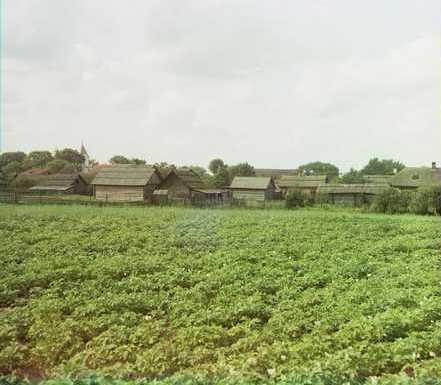 Drissa. View from north-east.
Drissa. View from north-east.S. Prokudin-Gorsky’s photo, beginning of 20th century. Several months ago I visited Polotsk Jewish community and gave a speech about the journal “Mishpoha” and about my trips around Belarus. There were a lot of questions. I was able to answer some of them; others will become an issue of our future publications. There are people who you especially wish to help. One of them is Ilya Maksovich Tunik. He is 77 (born in 1932). I met him some time later and he related me a story about his relatives and his childhood years. - I was born in Drissa. My mother, Gesia Savelievna, was born there. Her maiden name was Ioffe. Father, Mordukh Abramovich Tunik, came from Pukhovichi, which is Minsk region. People used to call him Max Abramovich. He graduated from a heder in Puhovichi. Later he moved to Minsk where he continued his education. He entered Belarusian state university, law department, but later got transferred to medical department. Then he worked as head physician at a hospital in Drissa.  The Drissa flowing into the Western Dvina.
The Drissa flowing into the Western Dvina. S. Prokudin-Gorsky’s photo, beginning of 20th century. Grandfather Sheel Ben Isroel Ioffe (everyone called him Saul) came to Drissa from Rezhitsa – now Rezekne. He was a watchmaker. Once, when my sister had scarlet fever, I had to spend forty days at my grandfather and grandmother’s house. Grandfather was slowly fixing watches, while grandmother (her name was Sheina Mikhelevna, maiden name Emmanuel) was sewing on her “Singer”. I enjoyed observing them work and I remember I was unwilling to come back home. Grandfather was a religious man. He attended the synagogue daily. He had a pleasant voice and used to be a cantor. They followed all the Jewish traditions. I recall how we were celebrating Passover. Grandfather was reading prayers and we had Passover wine. He even tried to teach me to read in Hebrew… However my parents belonged to the Communist party… and religion was not fashionable at the time. Everyone was talking about internationalism, and ignored the Jewish culture and national identity. The Jewish school in Drissa was located in a wooden two-storey building in Sovetskaya Street. The building was burnt down during the war. When I started the first grade, the Jewish school had already been turned into a Russian one. We felt the war was going to begin. Drissa used to be a border town before September 17th 1939. The other bank of the Western Dvina River belonged to Poland. Later, when the border was moved westwards, the town was still not too far from it. 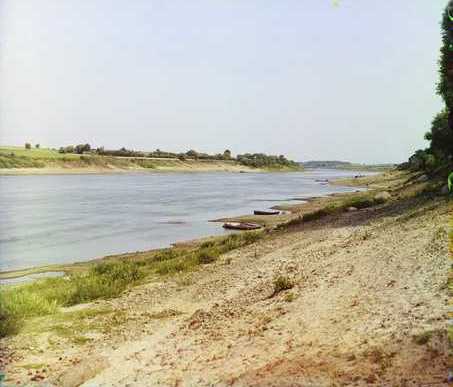 The Drissa. The Western Dvina.
The Drissa. The Western Dvina.S. Prokudin-Gorsky’s photo, beginning of 20th century. Nobody told me about the war, but we all felt certain tension. I clearly remember June 22nd 1941 – it was a bright sunny day. I went outside. Suddenly our housekeeper called me. She turned on the radio at 12 and we heard the war had been declared at 4 a.m. that morning… Thus a new life began. Stalin issued an order, which prohibited people to leave their workplaces, so my parents could not leave Drissa. Their main goal was to save the children – me and my sister. When I heard the word “war” I asked my parents if the war was coming to Drissa as well. Mum replied that probably it was going to happen. Several days after the war started our parents were allowed to send us, the children, away from the frontline. There was a car that took us. Mother’s parents were elderly people. Father was granted permission to send mother and her parents away by horse. By that time Germans had already approached Drissa. Mother and her family travelled eastwards and soon decided to come back – there seemed to be no real danger. Grandmother and grandfather were killed in the Drissa ghetto. 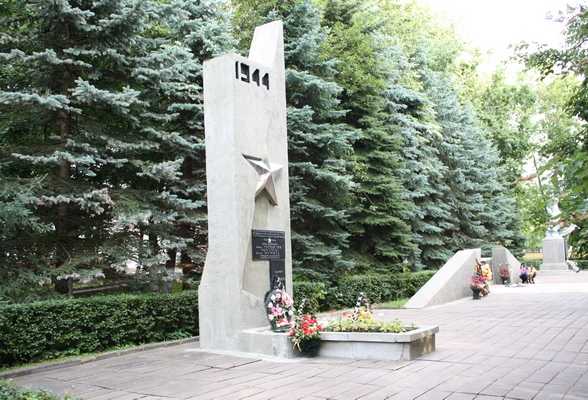 Verhnedvinsk. Memorial to soldiers.
Verhnedvinsk. Memorial to soldiers.
When Germans approached Drissa, father, together with some other men, walked to Volyntsy – a village 20 kilometers away from the town. There they managed to get on a train and get to Vitebsk. Father had to go to the local military registration and enlistment office; otherwise he would be considered a deserter. As he was a doctor, he was appointed head of regional health department and handed out a pistol. Father had to provide medical aid to the wounded in Sirotino – a village 40 kilometers away from Vitebsk. He had to assemble a group of doctors and send them there. Father was short and slim – he did not look very convincing. So, when he came to a local hospital and told the doctors they had to go to Sirotino, they replied they were not going to do it because there were Germans in the village. So, father had nothing left to do but take out his pistol. All of the doctors were killed in Sirotino. On the night before Vitebsk surrendered to Germans, father managed to leave for Velizh. He met us, by chance, in the woods near Velizh. Then he headed for the military registration and enlistment office in Viazma. At the beginning of the war my father turned 38. As for my mother, she reached Saratov in the summer of 1941. Then, in 1944, when Verhnedvinsk was liberated, we came back home. The town had been destroyed. Mother started working and I went to school. People began returning from evacuation, partisan brigades and the Army. During our meeting Ilya Maksovich kept repeating: “I was a child, I can hardly remember anything.” However the same evening he called me again and said: “I would like to add some facts to my story.” We agreed that he would write me a letter. Below are extracts from his letter. “Before the war Drissa had mainly private wooden houses. There were several one- and two-floor brick houses as well. The central street (Sovetskaya Street) was paved with stones, and the sidewalk – with bricks. All other streets were unpaved. In spring and autumn Leningradskaya Street was always muddy, so wooden pavement was made on road edges for people to walk on. 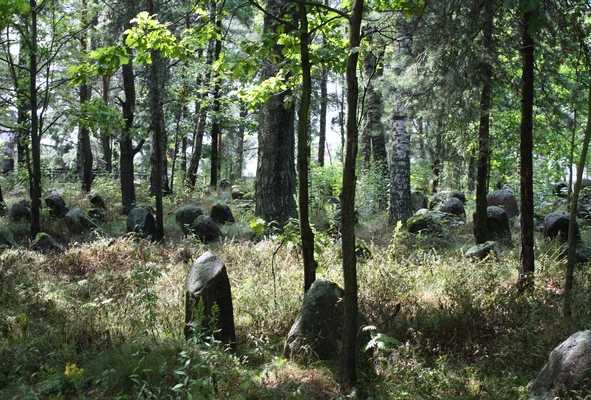 Verhnedvinsk. Old Jewish cemetery.
Verhnedvinsk. Old Jewish cemetery.
Father told me that when he came to Drissa in the 30s, there were many Jews working in the authorities. At home parents would sometimes speak Yiddish. However we did not especially adhere to Jewish traditions. I only remember that at Passover we always had matsot and mom cooked kneidlah. I still remember barber Drizin, who threatened to cut my ear off while doing my haircut. Such were his jokes. I remember photographer Isaak Sverdlov (I and his friends Leva were friends after the war.)” After finishing writing Ilya Maksovich’s story, I wanted to continue writing “Drissa notes”. The town is located on a high bank of the Western Dvina and the Drissa. It was founded in the 14th century. According to “The Jewish encyclopedia”, “in 1766 there were 399 Jews in the local community. In 1847 the Jewish community constituted 2684 people, and 50 years later – 2856, from the total population of 4238 people. What was Drissa of those years like? A person, who knows history and has some imagination, will tell you about a classical shtetl with a trade square, a synagogue, an Orthodox and Catholic churches and numerous shops in the central part. Drissa is located on two rivers. The Baltic Sea is located nearby, so a lot of timber was transported on the Dvina through Drissa. A lot of people earned their living on this business. When I came to Verhnedvinsk, I asked many people about who could share some information about the pre-war life in this region. Unfortunately, very few people were still alive. Many people mentioned the name of Ruvim Yakovlevich Ritz. After spending half a day with him, I realized could be no better expert at the history of the town than he. - I was born here in Sovetskaya Street in 1924, - he said. – My parents were craftsmen. Father, Yankel Ritz, was a shoemaker. Mother’s name was Mera (maiden name Zilber). There were four children in the family. I was the youngest. The neighborhood, where Ruvim Yakovlevich was born and brought up, was a typical Jewish one. That was the location of the ghetto during World War II. It was raining and we were strolling through the town, while Ruvim Yakovlevich was telling me about his pre-war neighbors and friends. 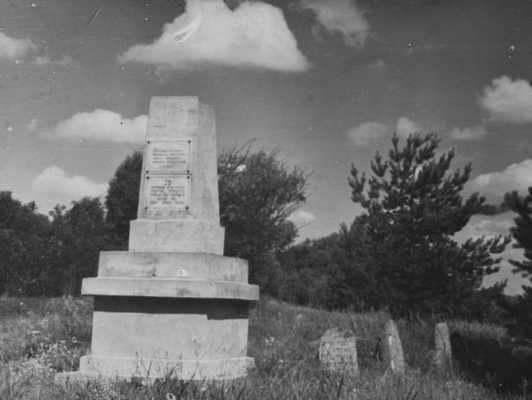
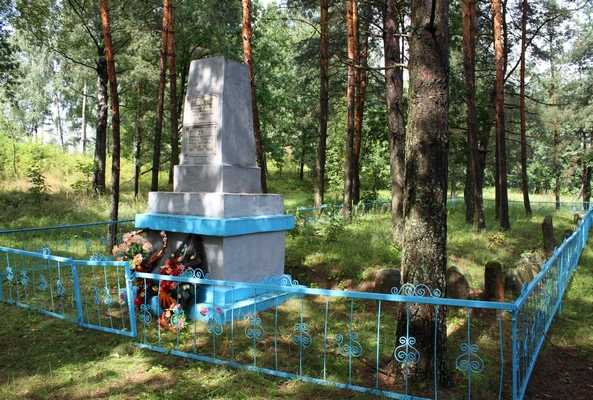 Verhnedvinsk. Memorial on location of ghetto residents’ execution. Photo taken at the end of the 50s and August, 2009.
Verhnedvinsk. Memorial on location of ghetto residents’ execution. Photo taken at the end of the 50s and August, 2009.
- What were the most widespread jobs of Drissa residents of that time? – Mainly crafts. There were shoemakers, tailors, carriers and blacksmiths. In the 1930s factories started to appear: a furniture factory, embroidery co-operative. In the 30s there was no rabbi in Drissa, at least I do not remember that there was one. Nevertheless, my father attended a synagogue. He never took me with him. Perhaps he understood that a new era was coming…  Ruvim Yakovlevich Ritz near the school.
Ruvim Yakovlevich Ritz near the school.
Sofia Moiseyevna Batushanskaya, a pre-war Drissa resident, recalled: “People of different nationalities used to live in our town. They were all friendly and respected one another. I clearly remember that our house was always open to anyone, who came to town and needed lodging.” Ruvim Yakovlevich and I approached the Western Dvina and he continued: - Before 1939 – he pointed at the opposite bank of the river – that territory belonged to Poland. We, boys, would often pretend that we were border patrol and guarded our border. I used to attend school No. 1, from which I graduated on June 21st 1941. The following day all the graduates came to the town park for a sports competition. Suddenly we heard sirens and saw German planes above our heads. Everyone started to panic. I remember one man even began shooting the planes with his own pistol. Everyone dashed to their homes. At that time it was announced on the radio that the war had been declared. 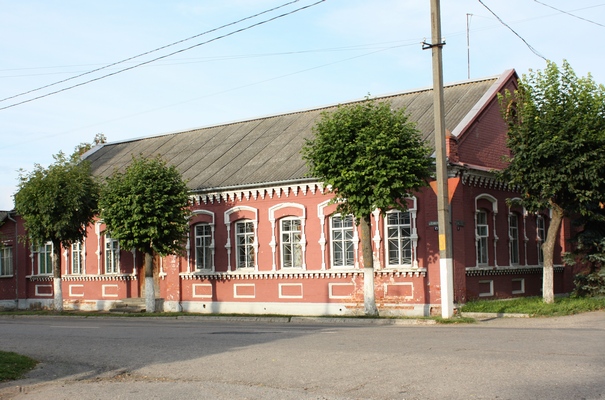 Verhnedvinsk. Bilding of future museum.
Verhnedvinsk. Bilding of future museum.
Then there was evacuation. Both Belorussians and Jews travelled eastwards. Some people made a decision to stay – they were certain that the Germans were not going to harm anyone. My uncle Mendel Ritz and his four children stayed in Drissa. All of them were killed by Nazis. We stayed in town until July 3rd 1941 and then also left. The house, where Ruvim used to live, was about five hundred meters away from the school. One can still see pre-war brick and wooden houses in Sovetskaya Street. These days the street is paved with asphalt, while in the old days it was paved with stone. This was the route the ghetto dwellers took to the execution. - After the war, when I came home, I asked local residents, what had actually happened here, - continues Ruvim Yakovlevich. – Before 1942 Jews in Drissa lived in their own houses. Then Nazis forced all the Jewish residents to register, attach yellow pieces of cloth to their clothes and perform hard physical work. They were shot for every minor mistake they made. At the beginning of 1942 they were made to move to the ghetto. On February 2nd they were pushed out of their houses and taken through the town towards the Jewish cemetery. Ditches had been dug out there beforehand. Drissa residents were prohibited even to approach their windows in order to prevent them from seeing the Jewish population taken to be murdered. The town was completely silent. When they approached the cemetery, the people were separated into groups of 10-15 and shot. Among the victims were my classmates Boinia and Maih. 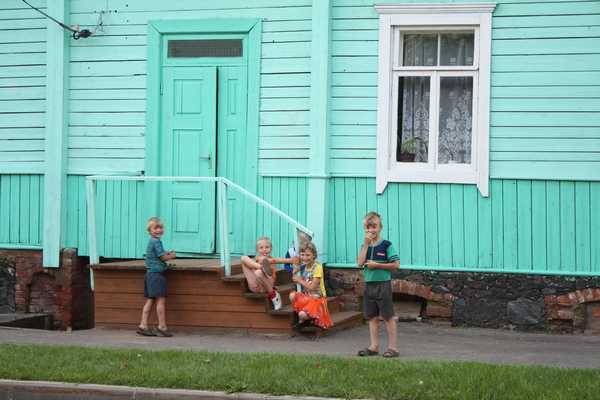 Verhnedvinsk. New generation lives in old Jewish houses.
Verhnedvinsk. New generation lives in old Jewish houses.
They say the ground was still moving several days after the execution… Sofia Moiseyevna Batushanskaya’s relatives were also murdered on that day. Before the war she used to live in Sovetskaya Street. There were five children in their family, she was the eldest. When the war began she was in St. Petersburg and did not manage to come back to Drissa. When, in the summer of 1945, she came back to her house, she saw that some other people were living in it: “Grief and sorrow fill my heart when I think of my parents, brothers and sister. My brother, Israel Moiseyevich Beilin, was born in 1923, sister Luba Moiseyevna Beilina – in 1925, brother Abram – in 1927 and brother Pavel – in 1934. Father’s name was Moisey Abramovich Beilin, mother’s – Hana Sholomovna Beilina. As the witnesses of the tragedy told me – they saw my family and numerous relatives and friends taken through the town on February 2nd, 1942. … I can also add that our neighbors and acquaintances were also buried in that mass grave: Riva Mlechina, the Sokolskys’ (5 people), the Zichermans, Bodnia, Naum Sokolsky, Dobba Shugal, Ilya Makutonin and others…” They say the victims were only accompanied by 2 Germans and policemen. It is not clear where exactly machine guns were located. But it is certain that there were several machine guns. Ruvim Ritz went on with his story: - When I returned here, many of the houses and even streets had been destroyed. Some of them were left intact, including my school. I can still remember how were restoring the town and dreaming about new life in future. - In 1954 I was appointed the principal of this school and held this position for 40 years. For many years our school remained one of the best in the region, - Ruvim Yakovlevich says with pride. In the second half of the fifties a memorial was set up on the mass grave. There is an inscription in Russian and in Hebrew. Verhnedvinsk, August 2009.Ilya Tunik’s video interview. August 2009. |
|||
|
|
Jewish settlements in Vitebsk regionVitebsk • Albrehtovo • Babinovichi • Baran • Bayevo • Begoml • Beshenkovichi • Bocheikovo • Bogushevsk • Borkovichi • Braslav • Bychiha • Chashniki • Disna • Dobromysli • Dokshitsy • Druya • Dubrovno • Glubokoye • Gorodok • Kamen • Kohanovo • Kolyshki • Kopys • Krasnopolie • Kublichi • Lepel • Liady • Liozno • Lukoml • Luzhki • Lyntupy • Miory • Obol • Oboltsy • Orsha • Osintorf • Ostrovno • Parafianovo • Plissa • Polotsk • Prozorki • Senno • Sharkovshina • Shumilino • Sirotino • Slaveni• Smolyany • Surazh • Tolochin • Ulla • Verhnedvinsk • Vidzy • Volyntsy • Yanovichi • Yezerishe • Zhary • Ziabki • |
Main |
New publications |
Contacts |
Site map |
Vitebsk region |
Mogilev region |
Minsk region |